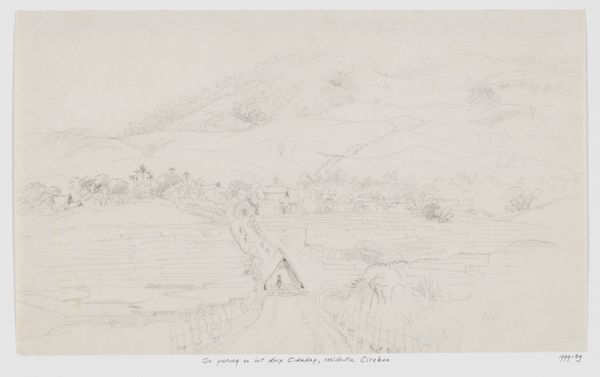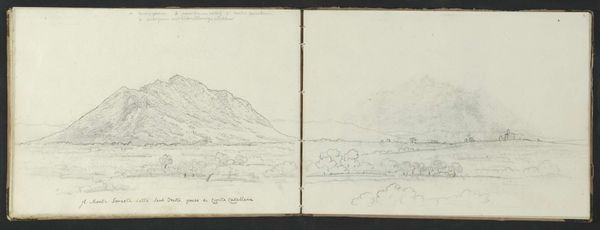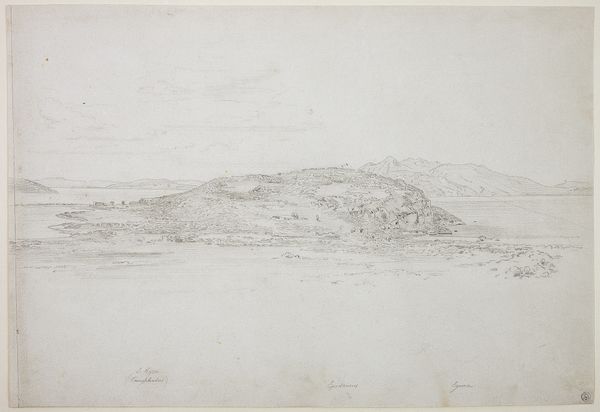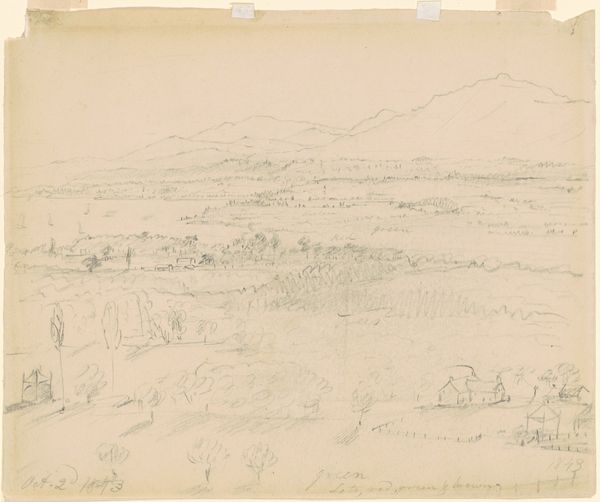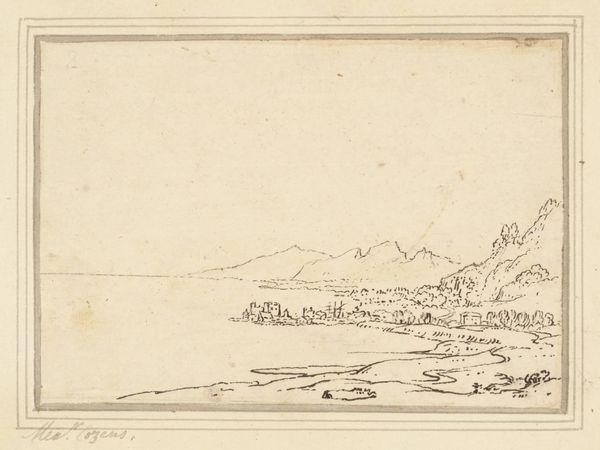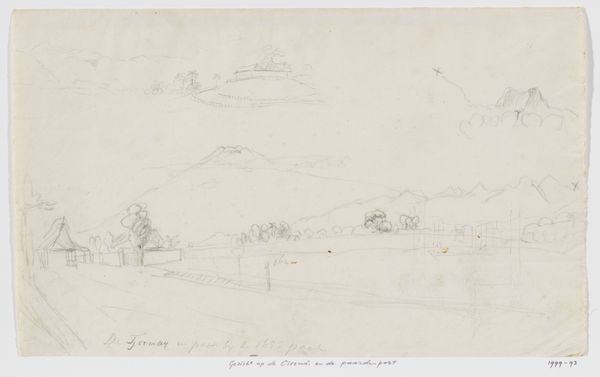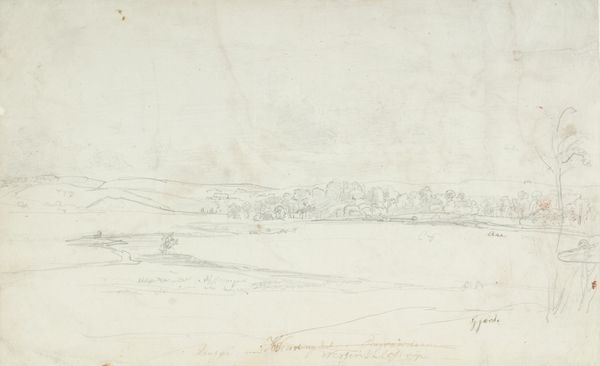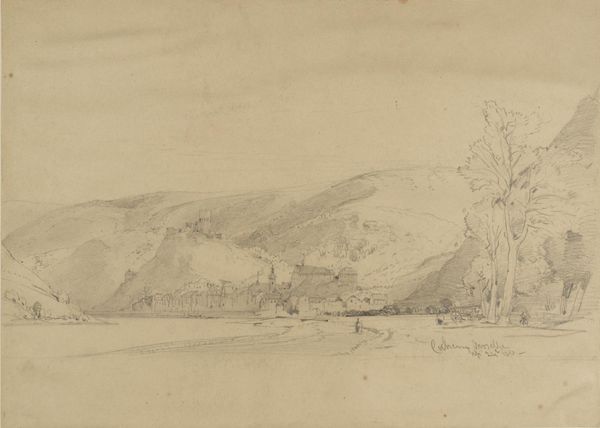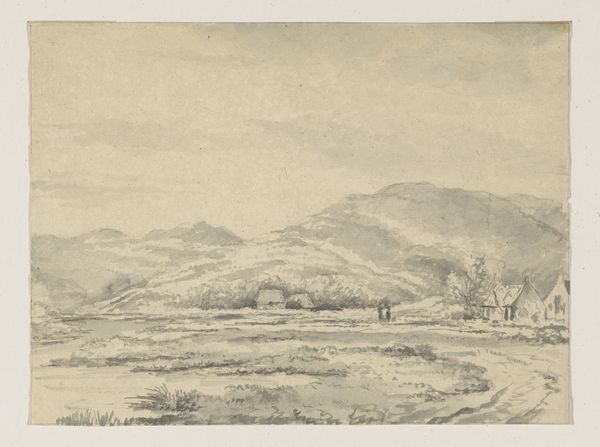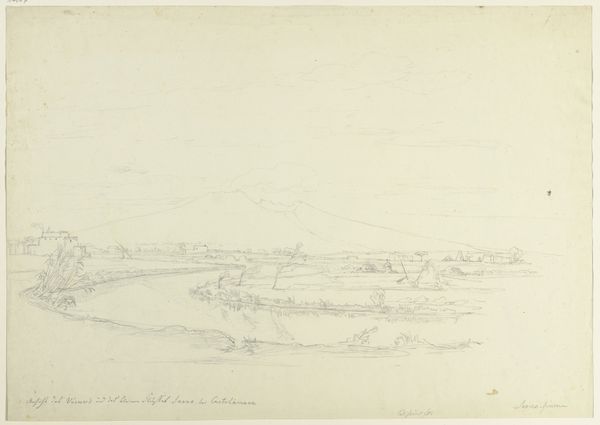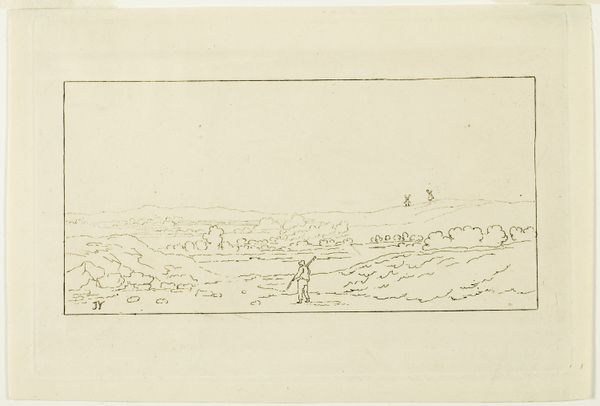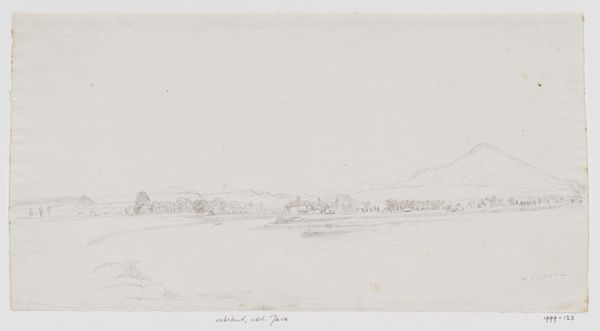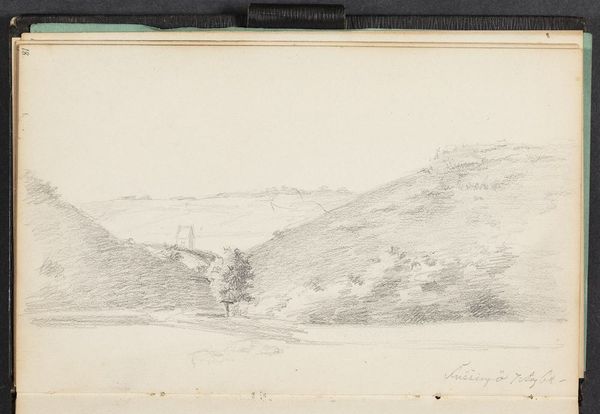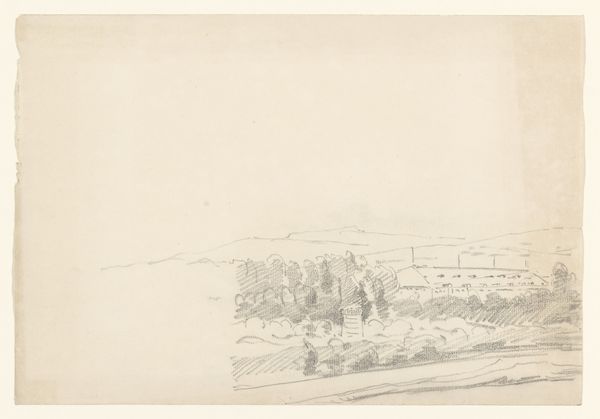
Landschap met gezicht op rijstvelden en een berg, West-Java c. 1816 - 1846
0:00
0:00
drawing, pencil
#
drawing
#
dutch-golden-age
#
pencil sketch
#
landscape
#
romanticism
#
pencil
Dimensions: height 390 mm, width 627 mm
Copyright: Rijks Museum: Open Domain
Editor: So, this is "Landschap met gezicht op rijstvelden en een berg, West-Java," or "Landscape with a view of rice fields and a mountain, West Java" by Adrianus Johannes Bik, made sometime between 1816 and 1846 using pencil. The Romanticism really stands out—it's dreamlike. What symbols do you see at play here? Curator: It’s more than a pretty picture; it captures a pivotal moment in the relationship between the Dutch colonizers and Java. Look at the almost ethereal rendering of the landscape contrasted with the clear depictions of people working the rice fields. It is a dichotomy – Java as this "untouched" romantic escape alongside an explicit symbol of colonial economics, rife with human labour. Do you see the tension? Editor: Yes, now I see it. It's in the detail given to the people and how the mountain seems further away and indistinct. Almost like labor versus leisure. So, the rice fields and the mountain symbolize these opposing forces? Curator: Precisely. And consider the Dutch fascination with landscape—the picturesque view meant to be ‘discovered’. The rice fields, though scenic, would’ve also represented wealth, a resource to be extracted, and labor under Dutch rule. The very act of sketching this scene transforms Java into a commodity, possessed by the Western gaze. It invites us to consider whose perspective is being valued. Editor: It's unsettling now that I look closer and realize that it almost creates the feeling of an observer, maybe even exploiter, in this place. A far cry from the pretty picture I saw initially. Curator: Indeed. That is the power of images; what stories and emotions they carry. It's a history lesson disguised as a simple drawing, making it an unintentional witness of colonial aspirations and values. Editor: It is also a striking example of how context shifts and reshapes what a cultural product may communicate over time. Curator: I agree. Even a simple sketch can unlock complex narratives about power, perception, and cultural memory. Thank you, Adrianus Johannes Bik!
Comments
No comments
Be the first to comment and join the conversation on the ultimate creative platform.
